Disclosure: This post may contain affiliate links. I earn a small commission of product sales to keep this website going.
Fujifilm makes some great interchangeable lens cameras for travelers and backpackers. There are quite a few of these mirrorless cameras in the lineup, making choosing the right one difficult.
Here’s a basic Fujifilm camera comparison from a travel perspective, focusing on the interchangeable lens cameras. If you need help building your Fujifilm photography kit in general, not just for travel, you can read this post about choosing a Fujifilm camera.
Don’t know much about Fujifilm X cameras? You may also want to read these posts:
- Why Fujifilm cameras are perfect for folks who just want the JPGs.
- Mirrorless cameras: The advantages and the disadvantages.
- Why Fujifilm’s firmware updates make them a better investment than any other camera.
- APS-C cameras are just as good for travel photography as full-frame cameras.
- The big picture in choosing a travel camera.
- Why I switched from Sony mirrorless to Fujifilm mirrorless.
Fujifilm camera comparison table
| X-H2 | X-H2S | X-T5 | X-Pro3 | X-T30 II | X-E4 | X-S20 | |
|---|---|---|---|---|---|---|---|
| Who it's for | Pro photographers & videographers | Pros who shoot a lot of video or fast action | Pros & serious photographers | Pro & serious street photographers | Hobbyists needing an all-around camera | Serious hobbyists; pros looking for small secondary body | Content creators and new photographers |
| Body-only price (Dec 2022) | $1,999 | $2,499 | $1,699 | $1,799 | $899 | $849 | $1,299 |
| Weather sealing? | Yes | Yes | Yes | Yes | No | No | No |
| APS-C Sensor | 40.2MP BSI X-Trans CMOS V HR | 26.2MP BSI X-Trans CMOS V HS | 40.2MP BSI X-Trans CMOS V | 26.1MP BSI X-Trans CMOS IV | 26.1MP BSI X-Trans CMOS IV | 26.1MP BSI X-Trans CMOS IV | 26.1 BSI X-Trans CMOS IV |
| Native ISO range | 125 to 12800 | 160 to 12800 | 125 to 12800 | 160 to 12800 | 160 to 12800 | 160 to 12800 | 160 to 12800 |
| In-camera stabilization? | 5-axis | 5-axis | 5-axis | No | No | No | 5-axis |
| Movie capability | 8K @ 30fps & 4K @ 60fps | 6K @ 30fps & 4K @ 120fps | 6K @ 30fps, 4K @ 60fps | 4K @ 29.97fps, HD @ 120fps | 4K @ 29.97fps, HD @ 120fps | 4K @ 29.97fps, HD @ 120fps | 6K @ 29.97fps, 4K @ 59.94fps, FHD @ 240fps |
| Burst shooting | 20 frames per second | 40 frames per second | 20 frames per second | 20 frames per second | 17 frames per second | 30 frames per second | 30 frames per second |
| Includes fill flash | Yes, external shoe-mount | Yes, external shoe-mount | No | No | Yes, built-in | No | Yes, built-in |
| Size | 5.37"x3.66"x3.33" | 5.37"x3.66"x3.33" | 5.1"x3.58"x2.51" | 5.5"x3.3"x1.8" | 4.7"x3.3"x1.8" | 4.8"x2.9"x1.3" | 5"x3.4"x2.6" |
| Weight (with battery, no lens) | 1.46 pounds | 1.46 pounds | 1.22 pounds | 1.1 pounds | 0.84 pounds | 0.8 pounds | 1 pound |
X-H2/X-H2S
The X-H2 and X-H2S are Fujifilm’s high-end APS-C cameras, released in 2022. The two versions are a “resolution” model (X-H2) and a “speed” model (X-H2S). You can read this article for more on that split.
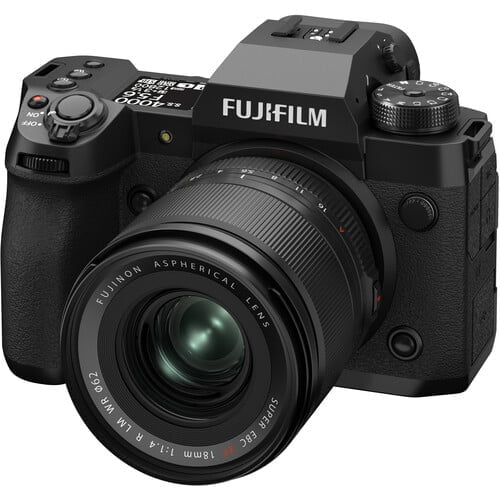
Who the X-H2 & X-H2S are for
I touch on this more in the article linked above. But summed up, both cameras are for photographers who need professional-level speed and quality. Both models excel at video and stills; the differences are in the speed and resolution each photographer needs for those videos & stills.
Highlights of the X-H2
- A robust body with moisture & dust resistance with operating temperatures down to -10C.
- Touchscreen, fully articulating 3″ LCD.
- X Processor Pro and X-Trans CMOS V backside-illuminated sensor.
- Five-axis in-body stabilization.
- Improved autofocus, including subject detection and tracking.
Disadvantages of the X-H2 for travel
- This is the largest & heaviest camera in the X lineup at 5.37″ x 3.66″ x 3.33″ and 1.46 pounds without the lens. Still, this is lighter and cheaper than similar DSLR APS-C cameras.
- A battery life of approx. 500 frames and 75 minutes at 4K video. This is a considerable improvement for mirrorless cameras but it still doesn’t get close to DSLRs.
Alternatives to the X-H2
The X-S20 is really impressive and capable, making it a much more portable stills & movie camera, though it doesn’t have the resolution of the X-H2 cameras. It’s also shaped similarly and features the same style of controls.
View current X-H2 prices on B&H Photo Video
Getting the X-H2 or X-H2S? My Fujifilm Photographer Membership includes an in-depth X-H2 tutorial; click here for 20% off your first three months.
X-T5
The 40.2MP X-T5 is the successor to the massively popular X-T4. What makes this camera so special is the increase in resolution from 26.1MP to 40.2MP. For an APS-C camera, it has remarkable low-light capability, including improved low-light autofocus and subject detection tracking.
Fujifilm’s significant firmware updates for the X-T5 will keep it competitive for years to come, making it an excellent investment.
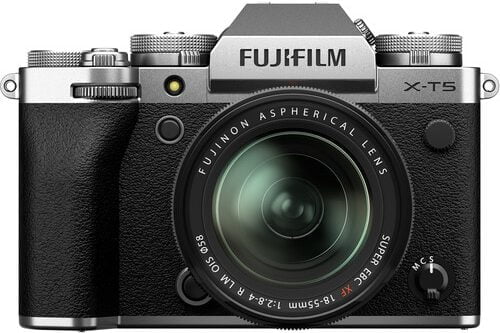
Who the X-T5 is for
The X-T5 is for professional and serious photographers who demand great colors, high resolution, and who also record video.
This is the Swiss Army Knife of Fujifilm cameras.
Highlights of the X-T5
- Moisture & dust resistant with operating temperatures down to -10C.
- X Processor Pro and 40.2MP BSI X-Trans CMOS V HR sensor deliver high detail & Fujifilm’s notorious color renditions.
- Shutter & aperture control is reminiscent of an old camera; easy menus, buttons, and dials help you focus on the photography, not the camera.
- Three-way tilting LCD touchscreen.
- 6K video capability up to 30fps and 4K at 60fps.
- Size & weight: 5.1″ x 3.58″ x 2.51″, 1.22 pounds without a lens.
Disadvantages of the X-T5 for travel
There aren’t a lot of cons for the X-T5 when looking at travel & backpacking applications – I’ve used all models from the X-T1 to X-T5. You’ll have to manufacture some “disadvantages,” such as a relatively low (12800) maximum native ISO and slightly slower autofocus than Sony mirrorless cameras. And these are really digging.
But those specs are just words; this is an ideal travel camera. It is also (save the X-H2) the largest Fujifilm camera.
The X-T5 has the same reduced battery life found in all mirrorless cameras, but this camera does have a newer, high-capacity battery and a more efficient processor. At the most, you’ll get about 600 shots out of this battery, which is still low compared to DSLRs but a significant improvement for mirrorless cameras.
Alternatives to the X-T5
The Fujifilm X-T4 was the predecessor to the X-T5. It has a lower-resolution 26.1MP sensor, a fully-articulating touchscreen LCD, and excellent movie capability. It is slightly larger than the X-T5.
The X-T4 is still a workhorse for many travel photographers and a fantastic stills camera, too, if you don’t need the built-in image stabilization (many lenses have this).
The X-Pro3 is a more compact rangefinder-style camera. It, too, has the same weather resistance as the X-T5. It’s made for a different flavor of photographer, and you can read more about it next in this Fujifilm camera comparison.
View current X-T5 prices on B&H Photo Video
Getting the X-T5? My Fujifilm Photographer Membership includes an in-depth X-T5 tutorial; click here for 20% off your first three months.
X-Pro3
The X-Pro3 was announced in late 2019, a highly-anticipated upgrade to the X-Pro2. It is more of a rangefinder-style camera and features a hybrid optical & electronic viewfinder.
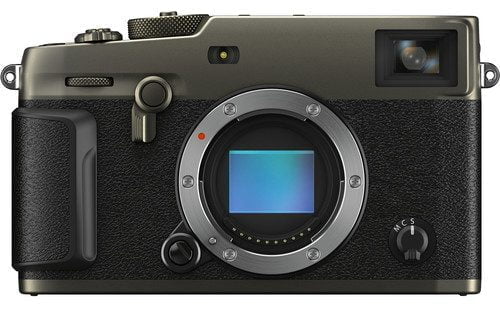
Who the X-Pro3 is for
The 26.1MP X-Pro3 is a great travel camera for professional or serious street photographers who prefer small prime lenses and rangefinder cameras.
Highlights of the X-Pro3
- The same X-Trans CMOS IV and X Processor Pro found in the X-T3 that gave the X-T3 a reputation as the best camera in 2018.
- Water & dust-resistant construction, durable body protected down to -10C.
- The optical viewfinder on the side of the camera overlays basic digital info; full electronic viewfinder options are also available. Viewfinder also includes a magnified focus aid.
- Basic yet perfectly-arranged controls keep things simple, letting you focus on the pictures (no pun intended).
- Fujifilm film simulations are so good that JPG shooting is good enough for most people who usually shoot RAW.
- The main LCD screen is hidden inside the flip-down mechanism; the front displays either your film simulation or basic settings.
- Size & weight of 5.5″ x 3.3″ x 1.8″, 1.1 pounds.
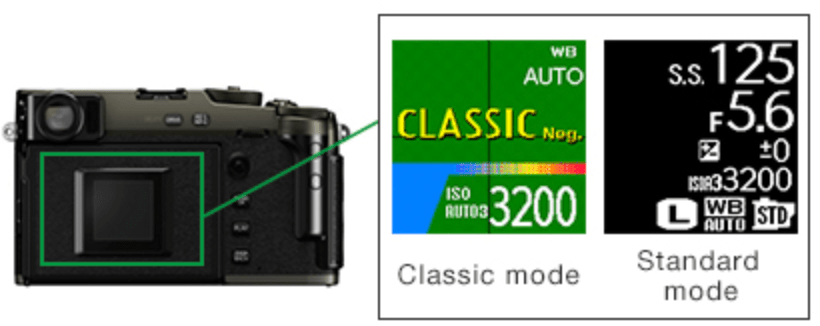
Disadvantages of the X-Pro3 for travel
The X-Pro3 was designed with travel photographers in mind, so there aren’t a lot of disadvantages for people who buy this camera for what it does.
Most of the shortcomings are if you try to use it for other disciplines, like action and wildlife.
- The X-Pro3 has a short battery life like other mirrorless cameras, and there is no external grip available (but that would violate the purpose of this camera).
- The X-Pro3 does not have a fill flash or include the shoe-mount small EF-X8 flash as the X-T3 does.
Alternatives to the X-Pro3
The X-T4 would be a better camera if you need a “jack of all trades” camera that can also shoot action and wildlife. It is also weather-sealed, has an upgraded, stabilized processor, and is only slightly larger than the X-Pro3.
If you don’t have the dough to spend on an X-Pro3 but still like the concept, you can find a great deal on the X-Pro2. This has the older & smaller but still beautiful X-Trans III 24.3MP sensor also found in the X-T2.
There is also the X100V (details at the end of this Fujifilm camera comparison). This is also a rangefinder-style 26.1MP camera with the X-Trans III sensor. The main difference is the fixed lens – it has a 23mm (equivalent to 35mm) lens with a maximum aperture of f/2.
View current X-Pro3 prices on B&H Photo Video
X-T30 II
Read about my trial period with the X-T30.
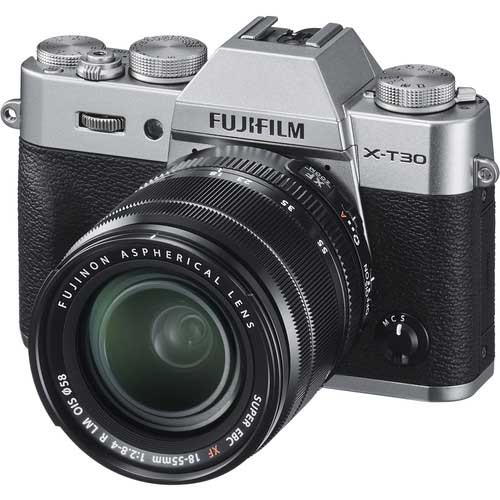
The X-T30 II is a mini, non-weather-sealed X-T3. It still has the same insides as the X-T4 but in the X-T30 body (minus the image stabilization). You can read about the differences between the X-T30 and X-T30 II here.
Who the X-T30 II is for
The 26.1MP X-T30 II is a wonderful choice for serious photographers and hobbyists looking for an all-around travel camera, and one with 4K video capability.
It’s also a good choice for a backup camera for X-T4 & X-T5 owners.
Highlights of the X-T30 II
- The combination of the X-Trans CMOS IV processor and Fujifilm’s film simulation modes produces remarkable photos straight out of the camera.
- Advanced SR AUTO Mode identifies both the overall scene and the subject to calculate the optimal settings.
- Tilting LCD with touchscreen shooting.
- It also records 4K video at 29.97fps and Full HD at 120fps.
- Small size & weight: 4.7″ x 3.3″ x 1.8″, 0.84 pounds.
Disadvantages of the X-T30 II for travel
- No environmental sealing like the X-T5 – this could be a big disadvantage for where you shoot.
- Smaller electronic viewfinder than the X-T5 may force you to favor the LCD screen.
- The shorter battery life of mirrorless cameras will give you 350 frames, or approximately 50 minutes of 4K recording.
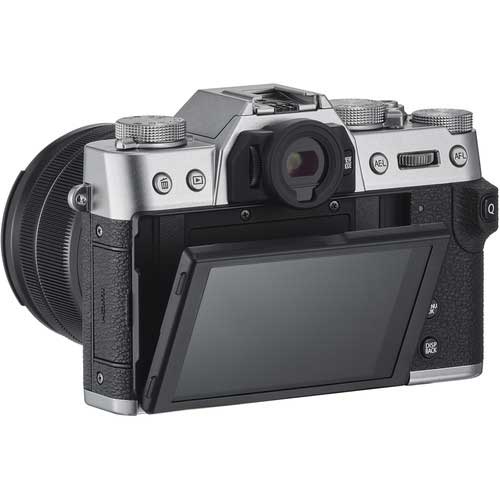
Alternatives to the X-T30 II
If you want weather sealing – a desirable feature for travel cameras – you’ll want to upgrade to the X-T4 or X-T5.
The predecessor to the X-T30 II, the X-T30, is discontinued but is widely available to purchase used.
View current X-T30 II prices on B&H Photo Video
Getting the X-T30 II? My Fujifilm Photographer Membership includes an in-depth X-T30 II tutorial; click here for 20% off your first three months.
X-E4
The X-E4 features the 26.1MP X-Trans 4 CMOS sensor and is the smallest ILC camera with a viewfinder in this Fujifilm X series comparison.
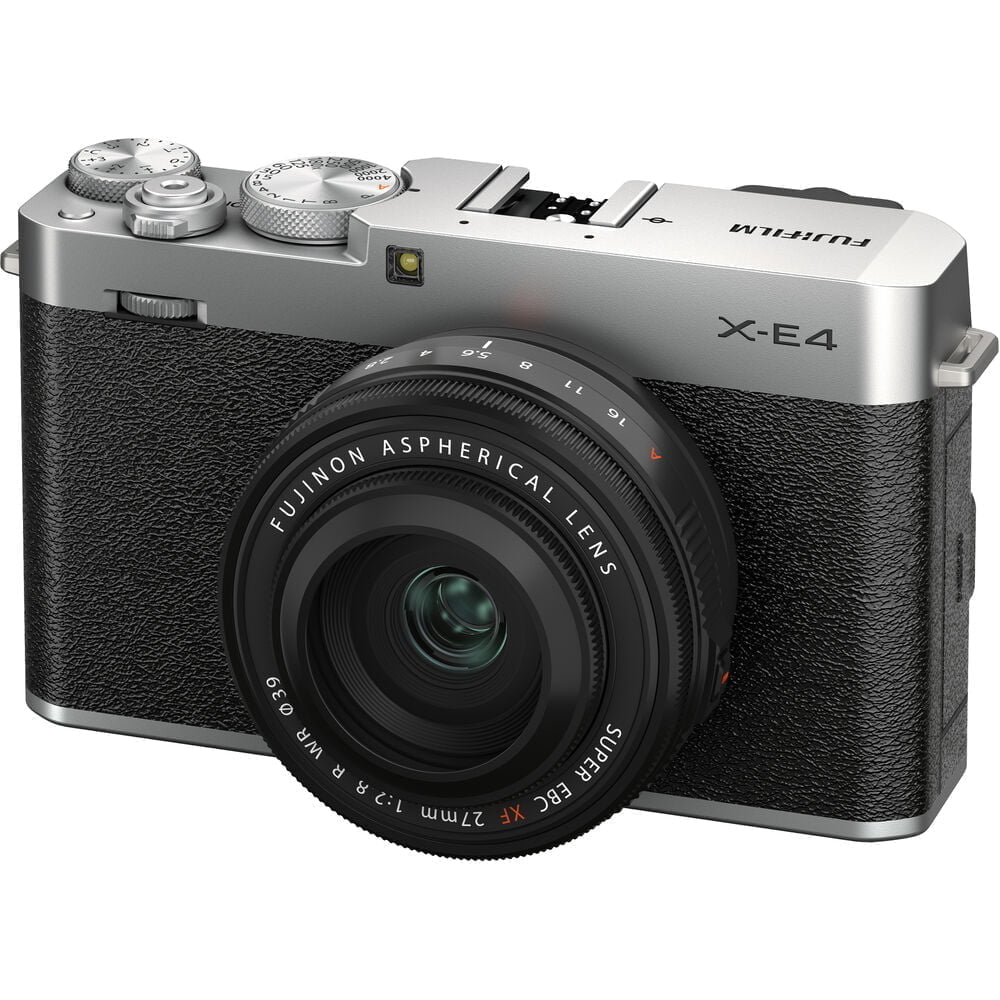
Who the X-E4 is for
The X-E4 is a great compact camera for professionals and serious hobbyists. It has a small body but still features the viewfinder, which is an essential feature for many photographers who don’t like to shoot from the rear LCD. The X-E line is a perfect secondary body for me since it doesn’t take up any space in my bag yet still has flagship capabilities.
Highlights of the X-E4
- Powerful features packed in a small body: X-Trans 4 processor, 30fps burst shooting, and 4K video at 29.97fps.
- Touchscreen LCD shooting on a tilting screen.
- Shooting modes from full Manual to SR+ AUTO make it ideal for all travel photography situations.
- Bluetooth pairing with the smartphone app enables GPS tagging.
- Most compact X-Series ILC at 4.8″ x 2.9″ x 1.3″ and 0.8 pounds.
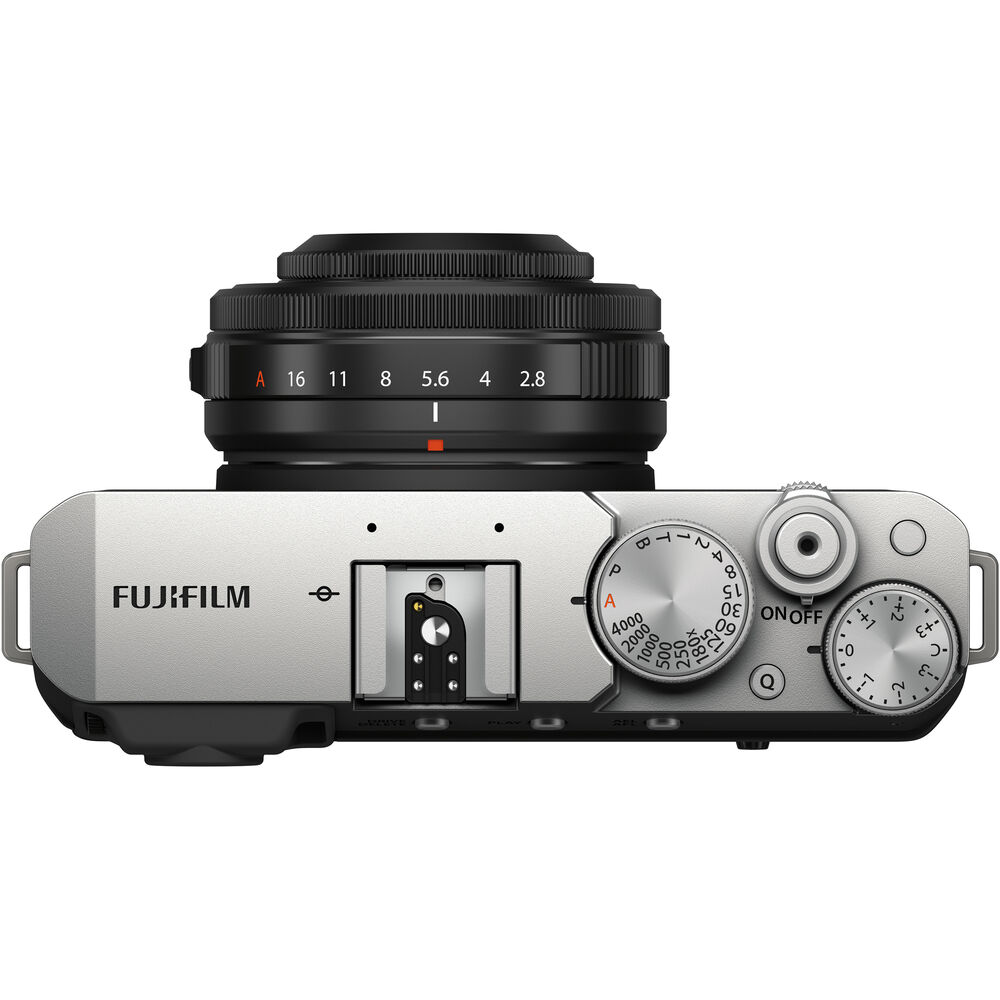
Disadvantages of the X-E4 for travel
- Extremely small size may make it uncomfortable to hold during long periods.
- There is no environmental sealing.
- The electronic viewfinder is smaller than higher-end Fujifilm X cameras.
- The short battery life found on all mirrorless cameras will give you approximately 350 shots.
Alternatives to the X-E4
The X-E3 predecessor has the smaller 24.3MP X-Trans III sensor and fixed LCD screen, but it is still a great camera.
If you’re okay with a slightly larger camera, the X-S20 may have some more desirable features.
View current X-E4 prices on B&H Photo Video
X-S20
The X-S20 is an update to the highly-successful X-S10. In this update, Fujifilm is heavily leaning into the “creator economy,” or, video.
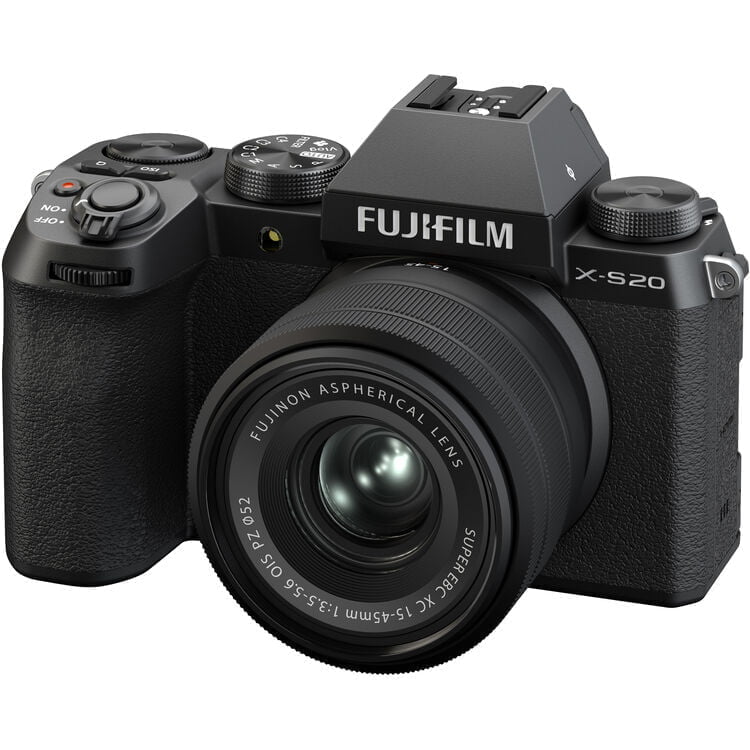
Who the X-S20 is for
“Content creators” who need to switch back and forth between stills and video but don’t have the cash to drop on an X-H2.
But it’s also an excellent option for enthusiasts just getting into photography!
Highlights of the X-S20
- Five-axis stabilized back-illuminated X Trans 4 sensor coupled with the newest X-Processor 5.
- New battery for up to 750 still photos.
- The small size but robust handgrip makes it comfortable to hold.
- A fully articulating touchscreen LCD complements the new X-S20 Vlog Mode.
- Easy controls yet compelling features for still photography and professional video (up to 6.2K at 30fps, 4K at 60fps, and FHD at 240fps).
- The small size of 5″ x 3.4″ x 2.6″ including handgrip; 17.6 ounces with battery.
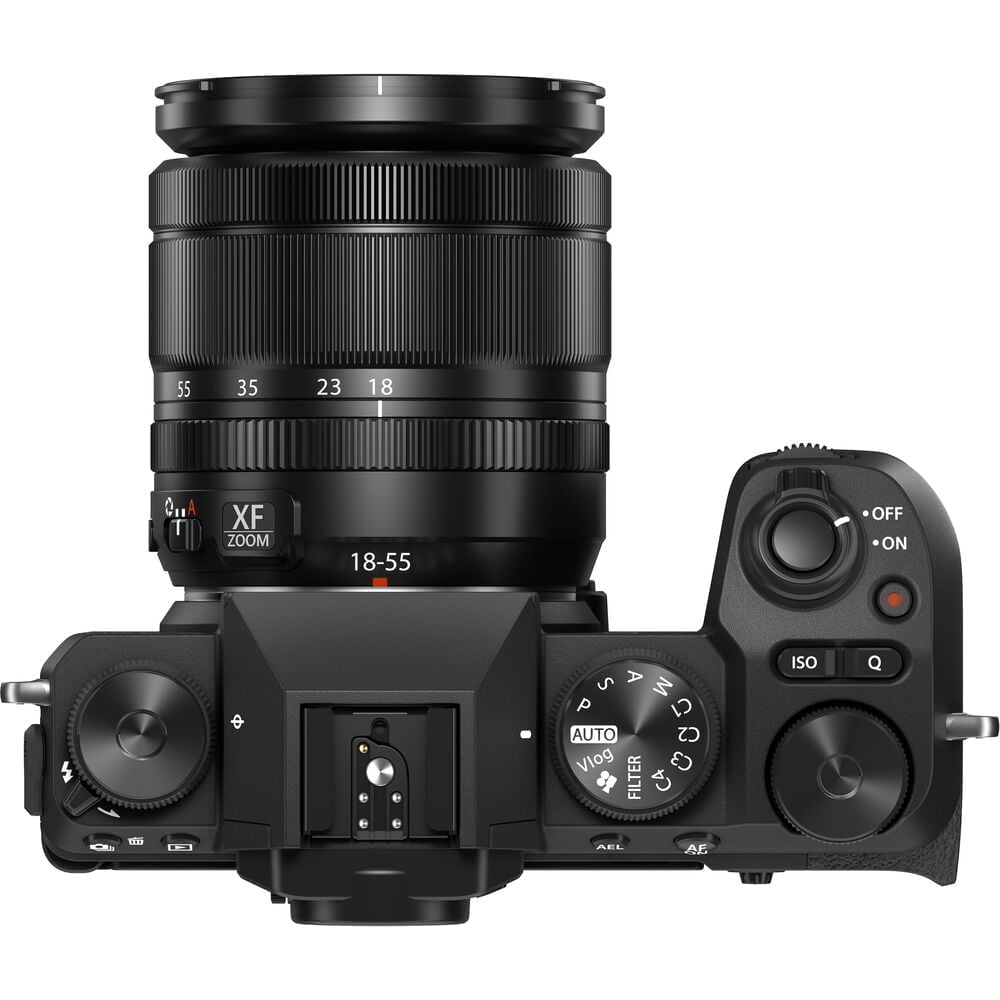
Disadvantages of the X-S20
- No weather sealing, a feature often desired by travel photographers.
- Photographers used to traditional Fujifilm controls must get used to the PSAM dial.
- A single card slot could be limiting for still & video creators.
- There are reports of early copies having LCD hardware problems.
Alternatives to the X-S20
Despite the X-S20 being packed with features, the lack of weather sealing may be a dealbreaker. If you do need these features and weather sealing, look into the X-H2 or even X-T5.
View current X-S20 deals on B&H Photo Video
Getting the X-S20? My Fujifilm Photographer Membership includes an in-depth X-S20 tutorial; click here for 20% off your first three months.
Honorable mentions
X100V
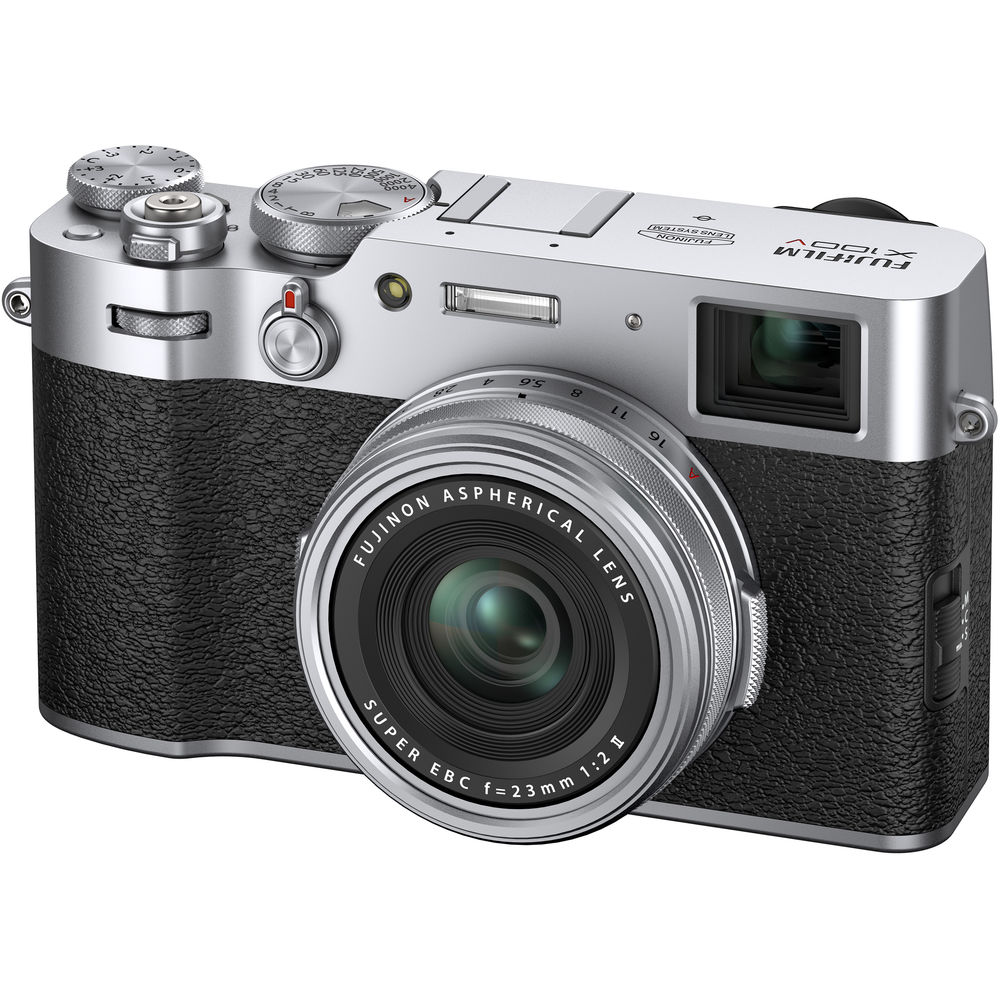
The 26.1MP X100V is the latest in the acclaimed X100 line. It does not have an interchangeable lens but a fixed 23mm f/2 lens (equivalent to 35mm).
This rangefinder-style camera features the X-Trans CMOS 4 sensor for beautiful color renditions and Fujifilm film simulation modes. A digital ND filter will give you some creative freedom on bright days. New to the X100V, it now features weather sealing and is fully sealed with a protective filter over the lens.
The small form factor, beautiful images, and ease of use make it a great “pocket street camera” for travelers. But the fixed focal length & lack of protection doesn’t make it ideal for a primary travel camera.
I always have mine with me – I call it my “sketchbook.”
Check current prices on B&H Photo Video
Getting the X100V? My Fujifilm Photographer Membership includes an in-depth X100V tutorial; click here for 20% off your first three months.
We’ll continue to update this Fujifilm X camera comparison as new models are released. Thanks!

David Madison
Sunday 17th of October 2021
You said above, about the X-T3, “The Fujifilm X-T3 was the predecessor to the X-T4. It does have a slightly older X-Trans CMOS III sensor and lacks image stabilization, but still has great movie recording capability.”
On the X-T3 specifications page, at https://fujifilm-x.com/global/products/cameras/x-t3/specifications/, the sensor is described as “23.5mm×15.6mm (APS-C) X-Trans CMOS 4 with primary color filter”.
Does your description of the sensor match the Fujifilm specifications page?
John Peltier
Sunday 17th of October 2021
Yep, you're right. This article has actually been around for years, originally written for the X-T2, so the sensor update escaped my revision. Thanks for catching that!